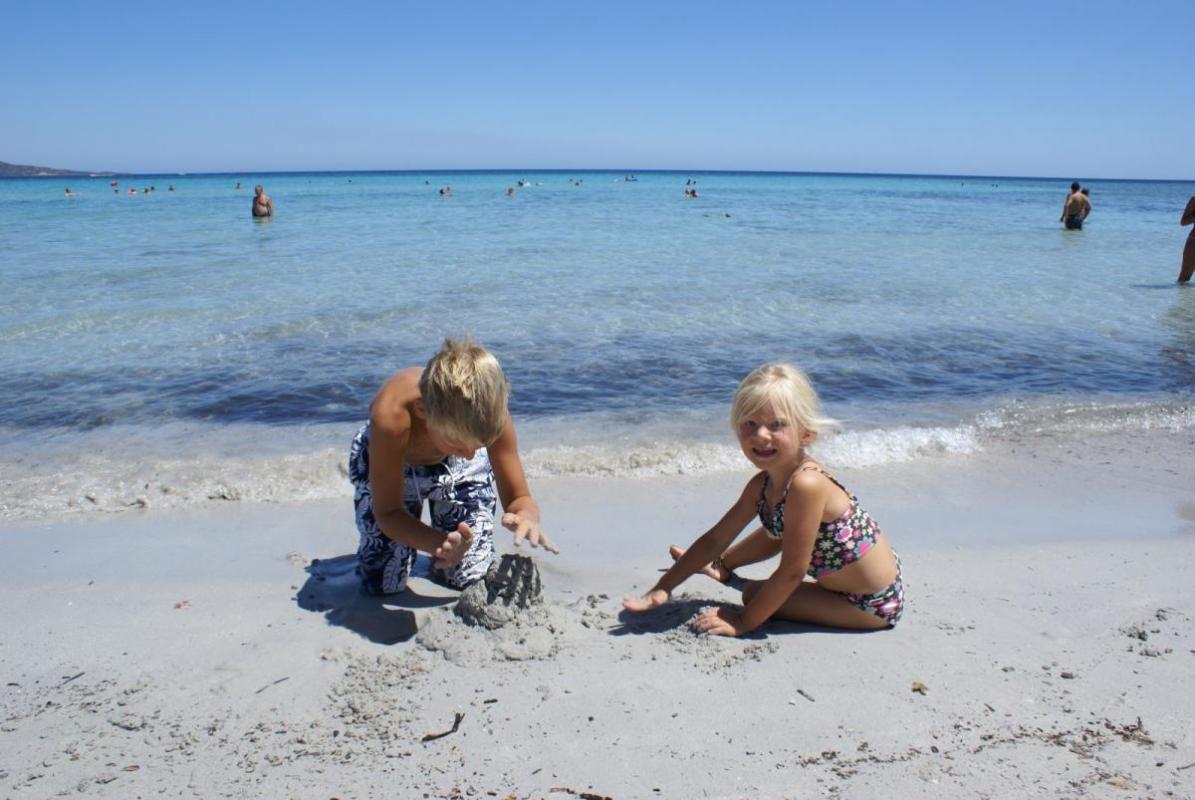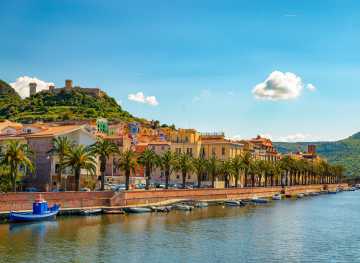Holidays in Sardinia - Sassari
The province of Sassari
The province of Sassari dates back to 1859, before the unification of Italy in 1861. Sassari has 92 municipalities and counts 481.052 inhabitants, of which 127.567 live in the capital, Sassari. The province covers an area of 7.692 square kilometers in the northern part of the island, from the west coast to the east coast.
A bit of history...
The province of Sassari has a rich history: cities like Sassari, the capital, or Alghero, Porto Torres, and Olbia all were important centres throughout the centuries of the Sardinian history...
Sassari: The history of the province of Sassari goes back to the Neolithic era when the first inhabitants settled there. The city itself was founded much later, during the Middle Ages. The city had to endure frequent foreign attacks and that is the reason why several forts can be found in the city. From here, Sassari defended itself against those attacks.
The current location of the city of Sassari is different from that of the original city of Torres which was located on the coast. Like in the case of Tharros and Oristano the many attacks by pirates and the outbreak of malaria forced the inhabitants to move further inland. That new city formed the basis for today's Sassari.
Take a look at the city of Sassari
Ex-province of Olbia-Tempio: The province of Olbia-Tempio has its origins in a royal edict of May 1807, dividing the island into 15 prefectures. One of these prefectures consisted of the regions of Gallura and Anglona, the area that until the 2016 was called Olbia-Tempio. In 1821, King Carlo Alberto reduced the number of provinces on the island to ten, then finally became eleven in 1833 with the arrival of the province of Gallura. Since 2016, this former province is part of the province of Sassari.
Must-sees in the province of Sassari
From historic heritage sites, museums and cultural events to the famous Sardinian beaches and other natural wonders, the north of Sardinia has something special for everyone!
The province of Sassari has some of the most renowned tourist destinations in Sardinia:
Alghero
Alghero is a city with strong Catalan influences. He is also known as Barceloneta, little Barcelona. Almost a quarter of the inhabitants speak a Sardinian variant of Catalan. Alghero is one of the top destinations on the island. There is therefore a lot to see in the field of culture, from archaeological excavations to churches and palaces. Highlights include the Cathedral of Santa Maria, the Casa Doria and the Chiesa di San Francesco.
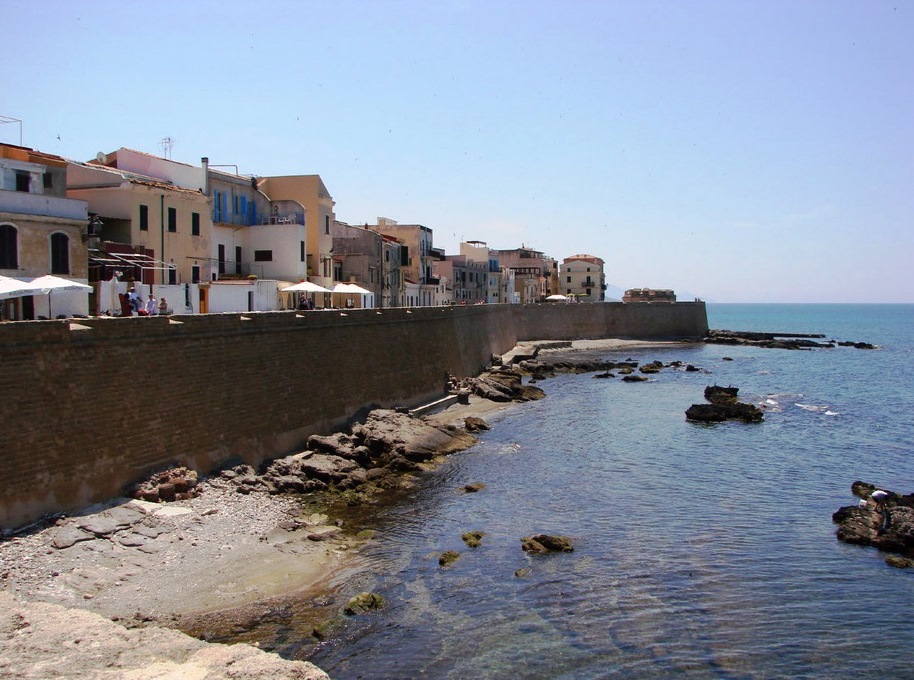
Maria Pia’s beach, Alghero: Maria Pia’s beach is close to Alghero and it's 1200 meters long, the sand is fine and white, without rocks. The beach is perfect for children because of its clear, shallow waters. The beach is close to all the amenities of Alghero and is surrounded by dunes and a pine forest. There is a parking lot nearby, and you can rent parasols and loungers. Close to the beach you can find bars, restaurants, and camping.
La Stalla beach, Alghero: this beach is located north of Alghero. It’s a sandy beach with clear waters framed between the rocky capes of Porto Conte. Here you can find a lively beach bar, rent parasols, and loungers, but also rent windsurfs and inflatable boats, and kayaks.
Food and wine:
Due to its Catalan influences, the city of Alghero has its culinary traditions. Alghero's cuisine is mainly based on fish and shellfish, such as the famous Algherese lobster. Some typical dishes are lobster all'algherese, coppazza, espaghetti with sea urchins, spaghetti with bottarga and paella algherese. Typical desserts are crème brullée and Menjar blanc. Regional vegetables are coral tomato, camona tomato, and thistles.
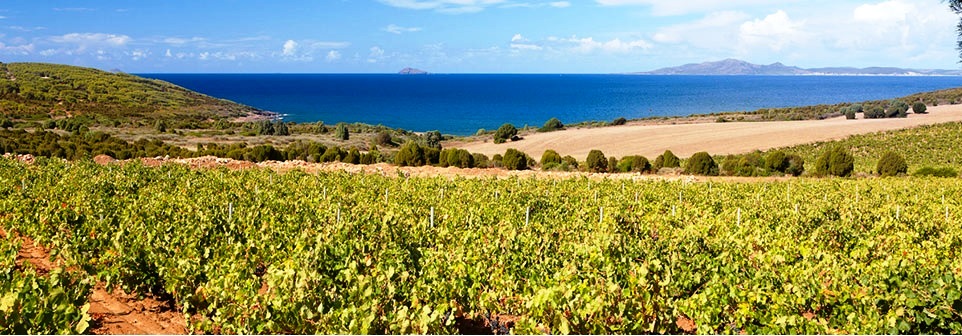
The most famous wine in this area, the Alghero DOC, is mainly produced by the Sella & Mosca winery. Another popular Sardinian wine from this area is the Anghelu Ruju, whose vineyards surround an archaeological site.
Olbia
Olbia is the most important city in the historic Gallura region, which has its own culture, including its language. The Gallura region has its dialect called Gallurese. This is a Corsican dialect spoken in the southern part of Corsica (Sartène and Alta Rocca). Olbia has an international airport, Olbia Costa Smeralda, and a ferry port, which, in combination with the many attraction of the Gallura region, make the city and the surrounding area one of the most important tourist hotspots of the island.
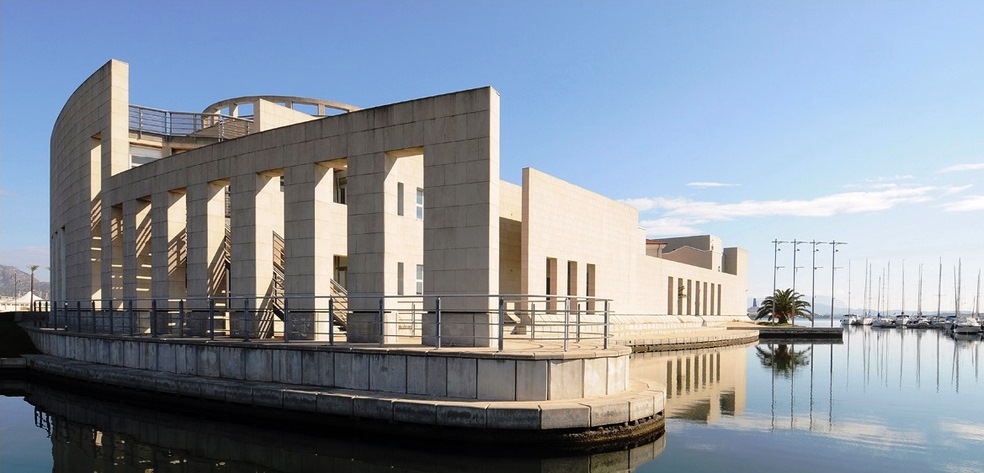
Archaeological Museum, Olbia: The museum is located on an island called Peddone. The expositions are about the history of Sardinia. The museum can be reached by boat from the harbour of Olbia.
Parco Fluviale del Padrongianus, Olbia: Located only five kilometers from Olbia, the park is dedicated to the conservation of local animal and plant species. It covers an area of about 33 hectares, including a significant portion of the Padrongianus River and the area around it. The varied landscape makes it a good place to visit during an active holiday. Here you can practice hiking, archery, canoeing, kayaking, mountain biking, bird watching, and all sort of outdoor activities.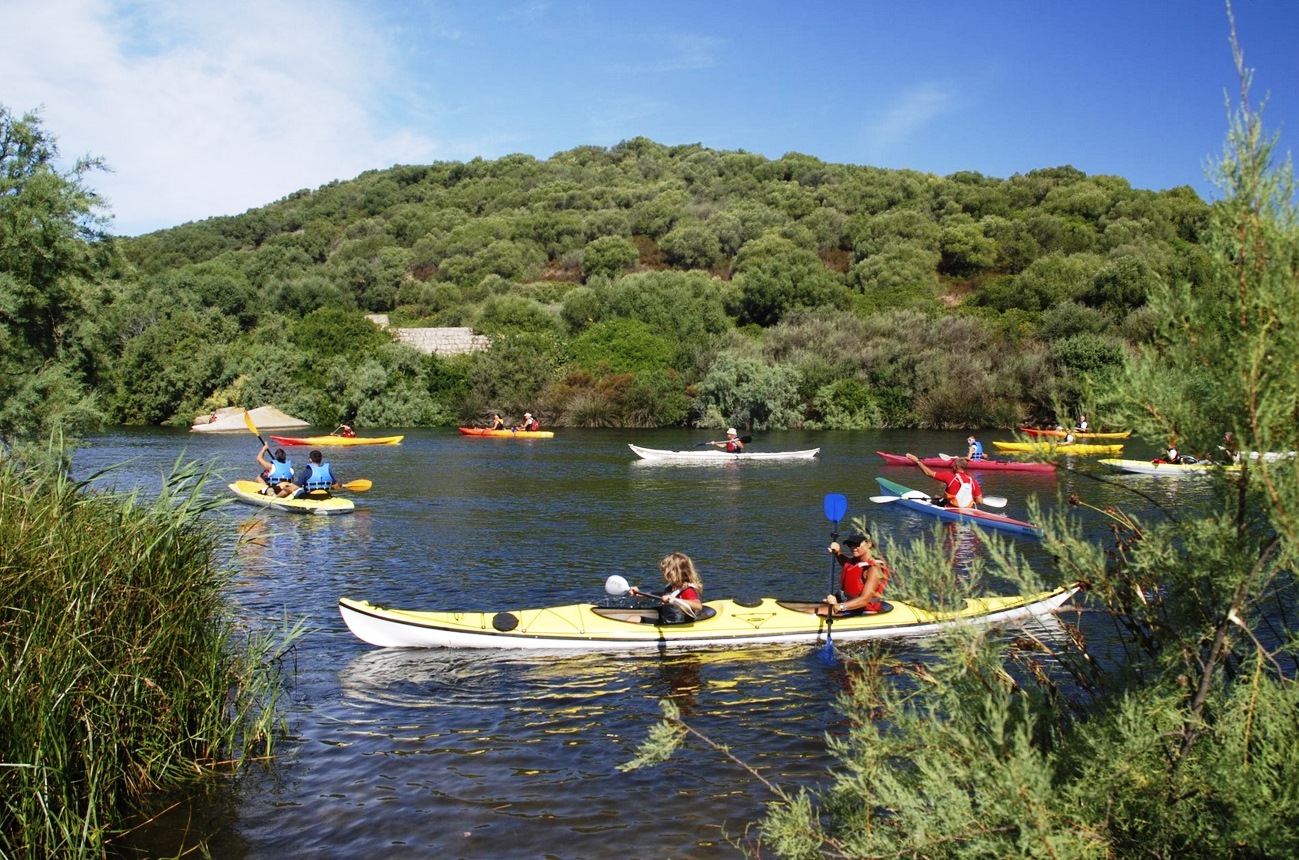
The park has guided tours in English, and the guides will be happy to tell you everything about the park! Information boards have been placed along the route with information about the river, flora, and fauna, about which the guides themselves can tell you much more.
Sacred well of “Sa Testa”, Olbia: this Nuragic temple is one of the most important sites in the Gallura region, and it was discovered in 1930. The temple is about 18 metres long and is made of blocks of granite and trachyte, that were precisely shaped into blocks. The temple follows recurring pattern among Nuragic sacred wells: a circle of rocks with a courtyard, connected by a corridor to the 17 precisely shaped steps that lead to the well.
Su Monte ‘e S’Abe Tombs of the Giants, Olbia: This tomb is one of the most important Nuragic sites in Sardinia. It dates back to 1800 BC.
Food and wine
Aranciata nuorese: a sweet snack made from oranges, almonds, and honey.
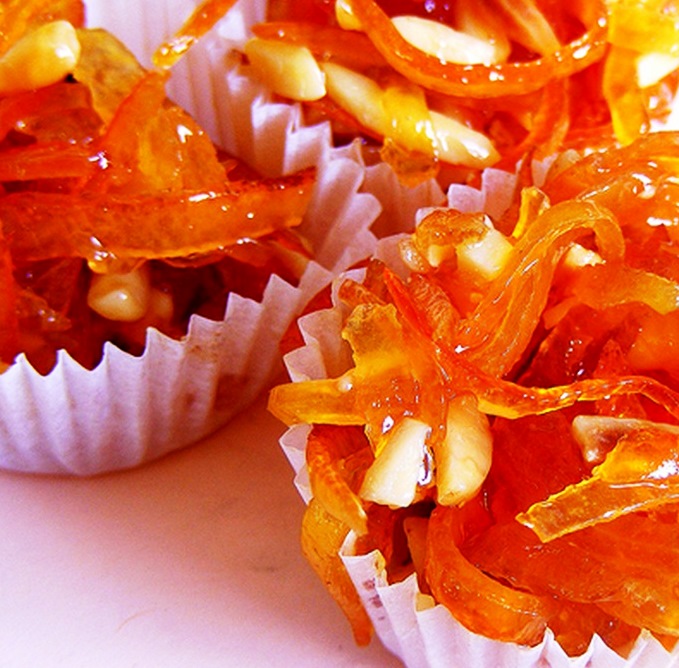
Costa Smeralda
The Costa Smeralda is one of the pearls of the Mediterranean, and the most exclusive destination in Italy. Luxury hotels and villas, high end-fashion boutiques, the most exclusive restaurants and clubs, all surrounded by beautiful Mediterranean nature and some of the most beautiful Sardinian beaches. Its no surprise that the Costa Smeralda is one of the most glamourous jet-set destinations in Europe.
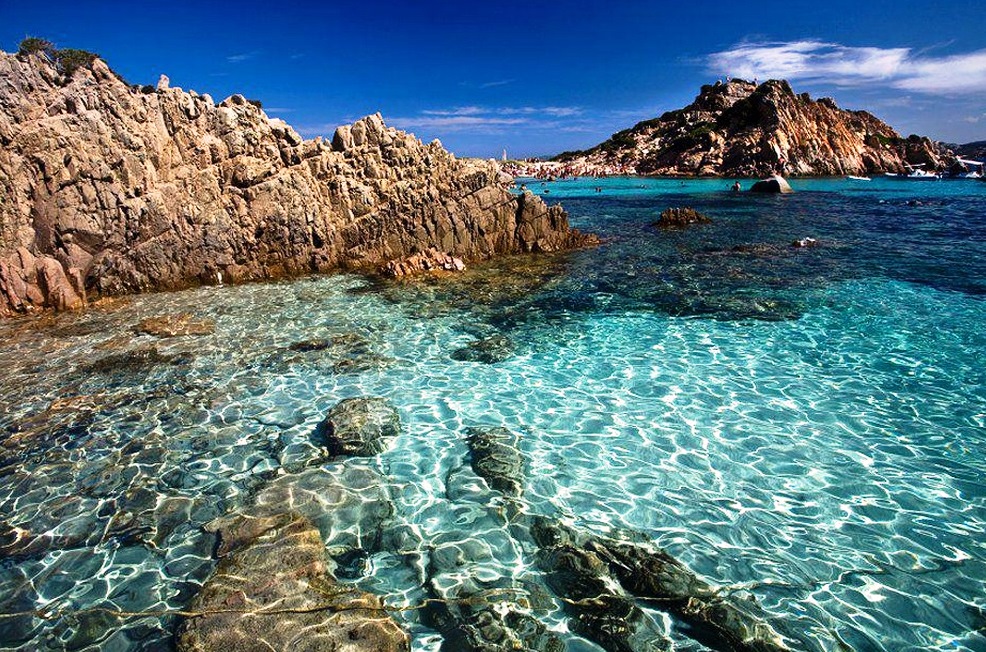
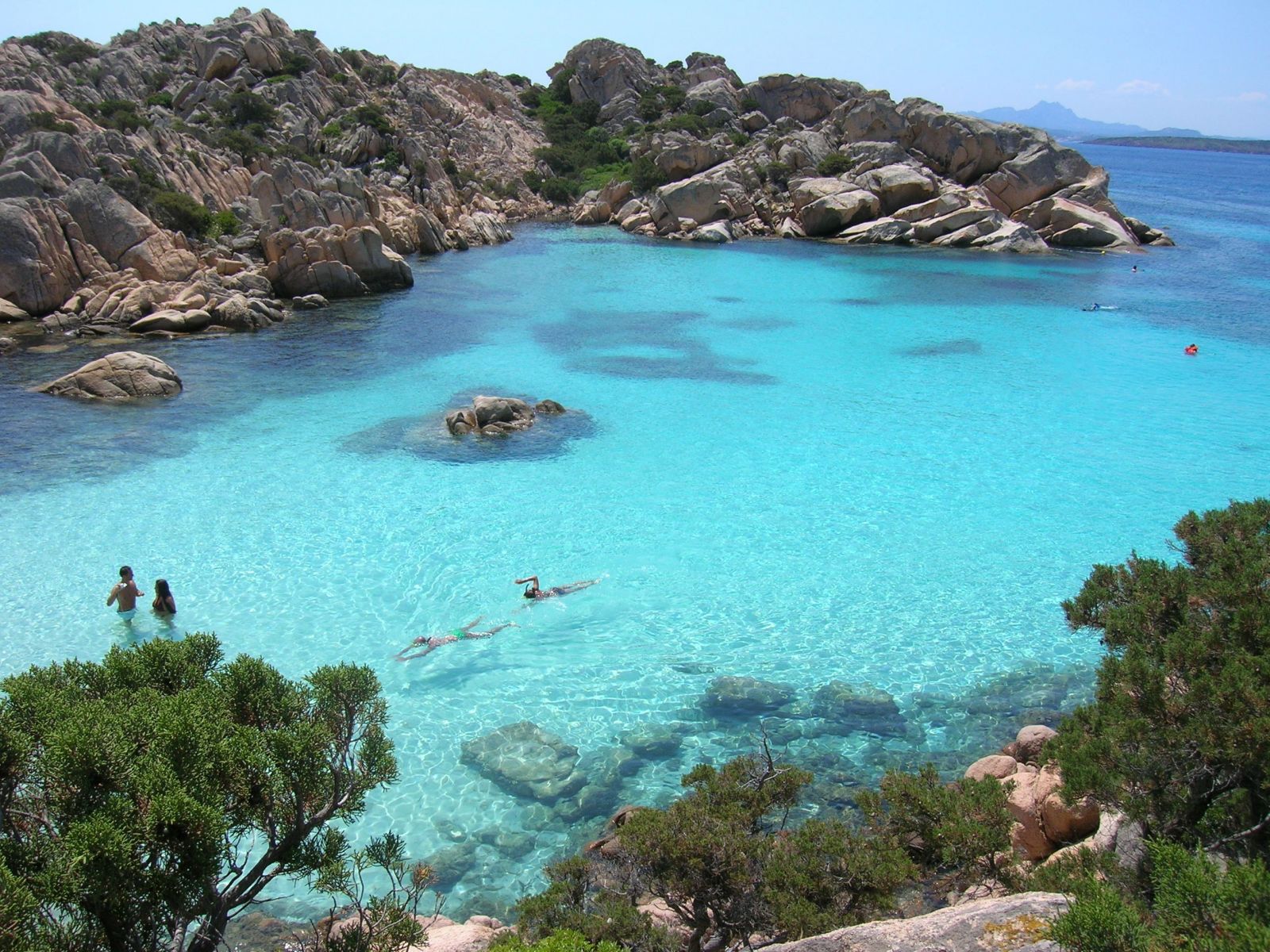
Porto Cervo: the hearth of the Costa Smeralda, the most exclusive place in Sardinia. The town, with its luxury boutiques and the yacht harbour is definitely worth a visit.
Spiaggia Barca Bruciata, Arzachena: this 800 meters long white sandy beach, thanks to its emerald clear waters is a perfect for snorkeling. Here you can find a parking lot, beach loungers and parasols for rental, and a bar. The beach is also safe for kids.
Spiaggia del Romazzino, Costa Smeralda: one of the famous beaches of the costa Smeralda. The beach is really stunning, with clear waters and protected from the waves. All the services that you may need are available at the beach, just remember that in this exclusive part of Sardinia the prices are very high. Tip: bring your own beach equipment and drinks!
Poltu di Li Cogghj beach, or Spiaggia del Principe, Costa Smeralda: another famous beach of the Costa Smeralda. This small beach is only 250 meters long and quite popular, so it can get crowded in summer. However, it is a wonderful beach, with crystal clear water and fine sand. Here you can park your car, rent beach equipment and have a drink at the beach bar!
Piccolo Romazzino Beach, Costa Smeralda: small yet wonderful white beach, with clear blue waters.
Capriccioli beach, Costa Smeralda: Another small beach, which is often compared to a natural swimming pool because of the wonderful clear water. You can rent parasols and loungers here.
Palau and La Maddalena
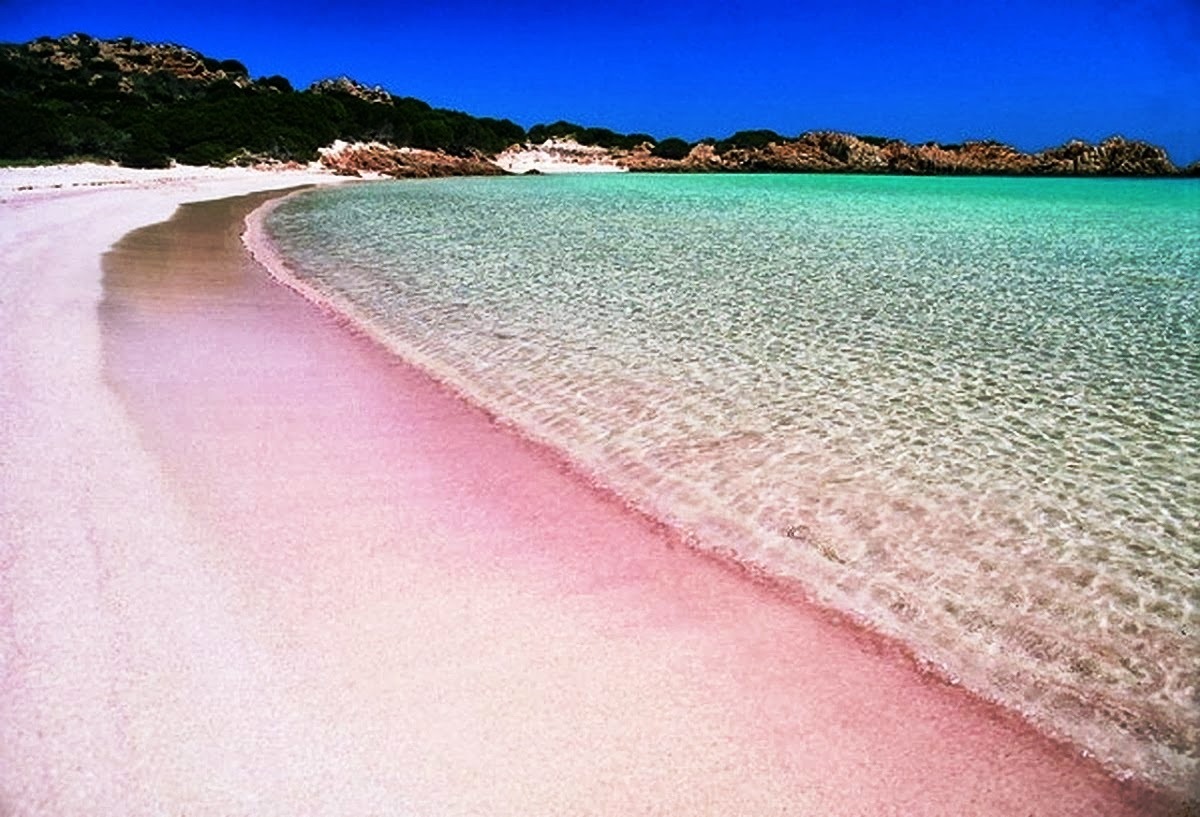 La Maddalena: An archipelago with more than 60 islands off the coast of Northern Sardinia. It is a nature reserve, but the main island of La Maddalena is inhabited and can therefore be visited by boat.
La Maddalena: An archipelago with more than 60 islands off the coast of Northern Sardinia. It is a nature reserve, but the main island of La Maddalena is inhabited and can therefore be visited by boat.
There are available very interesting for boat tours, that you can join from the town of Palau. Highly reccommended a visit to the pink beach of Budelli, when it is allowed (it is a protected natural reserve).
Roccia dell'Orso, Palau: the most famous rock in Sardinia! The "Bear Rock" is located on top of a mountain near Palau and is one of the must-see landmarks of north Sardinia. This huge piece of granite in the shape of a bear stands at a height of no less than 120 meters.
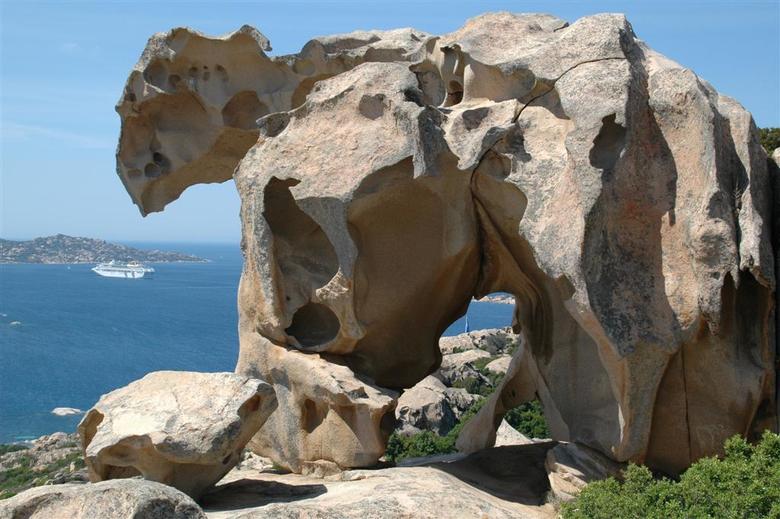
For 2 euros you can buy a ticket to visit this attraction, for which you have to climb a 540-meter-long staircase that takes you into the bear's belly. Once at the top you have a phenomenal view of Corsica and the archipelago of La Maddalena. This is definitely worth a visit!
San Teodoro
San Teodoro, a picturesque coastal town located between Olbia and Budoni, is one of the most popular beach holidays destinations in Sardinia.
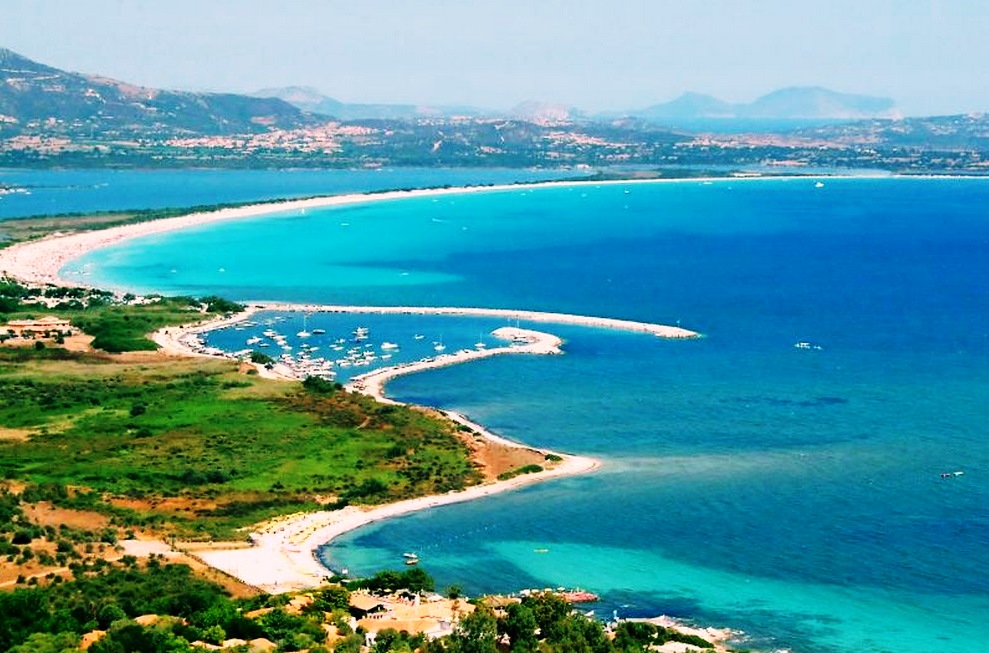
Baia Salinedda’s beach, San Teodoro: This beautiful small beach is relatively unknown so its ideal if you want to relax away from the crowds.
Cala Brandinchi beach, San Teodoro: This beach is known among the locals as “Tahiti” because of the crystal-clear shallow waters and long beach. This beach is quite small and gets crowded during July and August, however in September you will have this paradise all for you!
Lu Impostu, San Teodoro: This beach is the “sister” of the Cala Brandinchi’s beach. The two beaches are located in two adjacent small bays, separated from each other only by Capo Capicciolu, and they can be accessed from the same parking lot.
La Cinta beach, San Teodoro: San Teodoro’s beach. La Cinta (The Belt) is a long beach that divides San Teodoro lagoon from the sea, and to that it owes its name. This 4km long white sandy beach is one of the most beautiful and famous beaches in Sardinia. In the southern part of the beach, you can find plenty of beach bars, surf schools, boat rental services.
Isuledda beach, San Teodoro: located between San Teodoro and Porto Ottiolu, the dunes of this peaceful white sandy beach divide the clear turquoise waters of the sea from the lagoon behind. In the lagoon is possible to see various types of local birds, and the pink flamingos. Ath the beach there are two nice beach bars, and free parking.
Santa Teresa di Gallura:
Rena Bianca beach, Santa Teresa di Gallura: from here you can have a view of the Island of Corsica at the distance. This beach has the blue flag award, which means it has good and sustainable tourism facilities, and the water and the beach itself are excellent. Here you can rent all the beach equipment that you may need, and there are bars and restaurants.
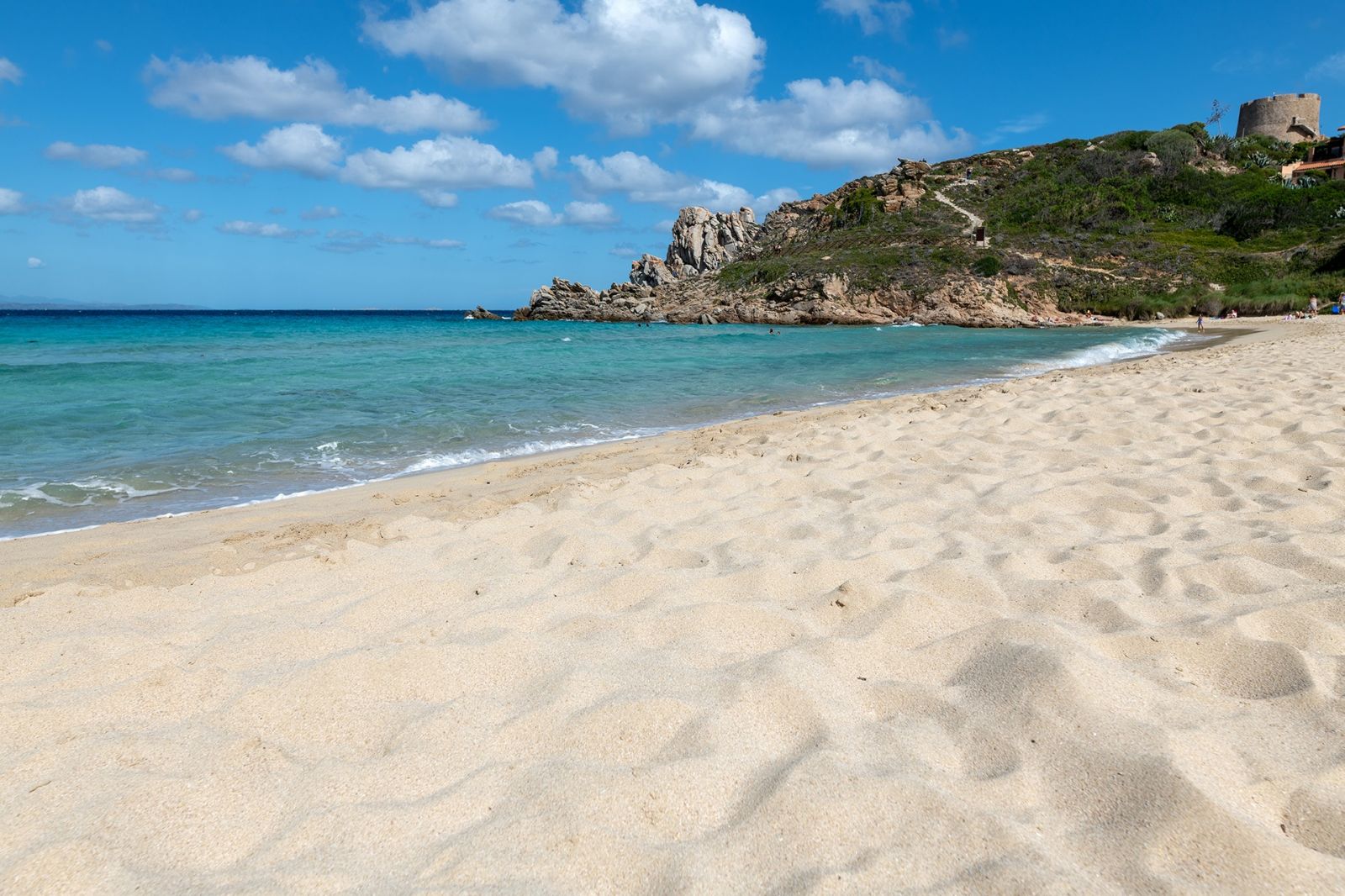
Lu Brandali Nuragic Complex, Santa Teresa di Gallura: One of the most famous Nuragic villages in Gallura, it was discovered in 1960 and the archaeologists are still excavating the areas as they keep bringing to light important findings. The Tomb of Giants counts 50 unearthed burial sites and the Nuragic village has two towers that are still being excavated.
Stintino and L'Asinara
Asinara Island National Park: The island of Asinara, with an area of 51.23 km² and a coastline of 110 km, has a predominantly mountainous surface. The flora of the island has, roughly, the same components as that of the mainland. Fennel, clover, and lavender grow along the rocky coasts. Bermuda grass, beach grass, Santolina and sea lilies can be found on the sandy shores.
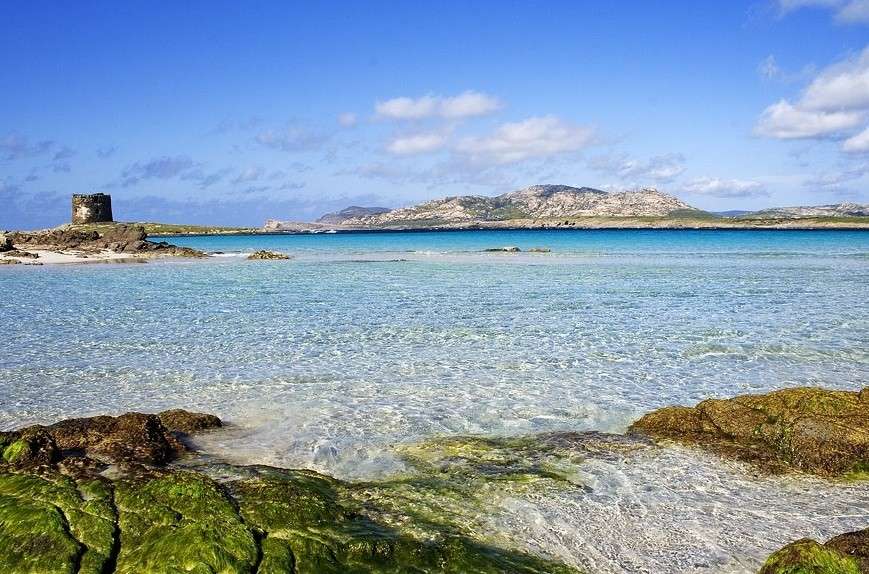
La Pelosa beach, Stintino: this beach is one of the must-see beaches in Sardinia, and it is one of the best beaches in Europe! The clear turquoise waters and the fine white sand give this beach a Caribbean appeal. The beach has shallow waters, so its perfect for families with kids. Here you can rent parasols, loungers and go snorkelling, kayaking or windsurfing.
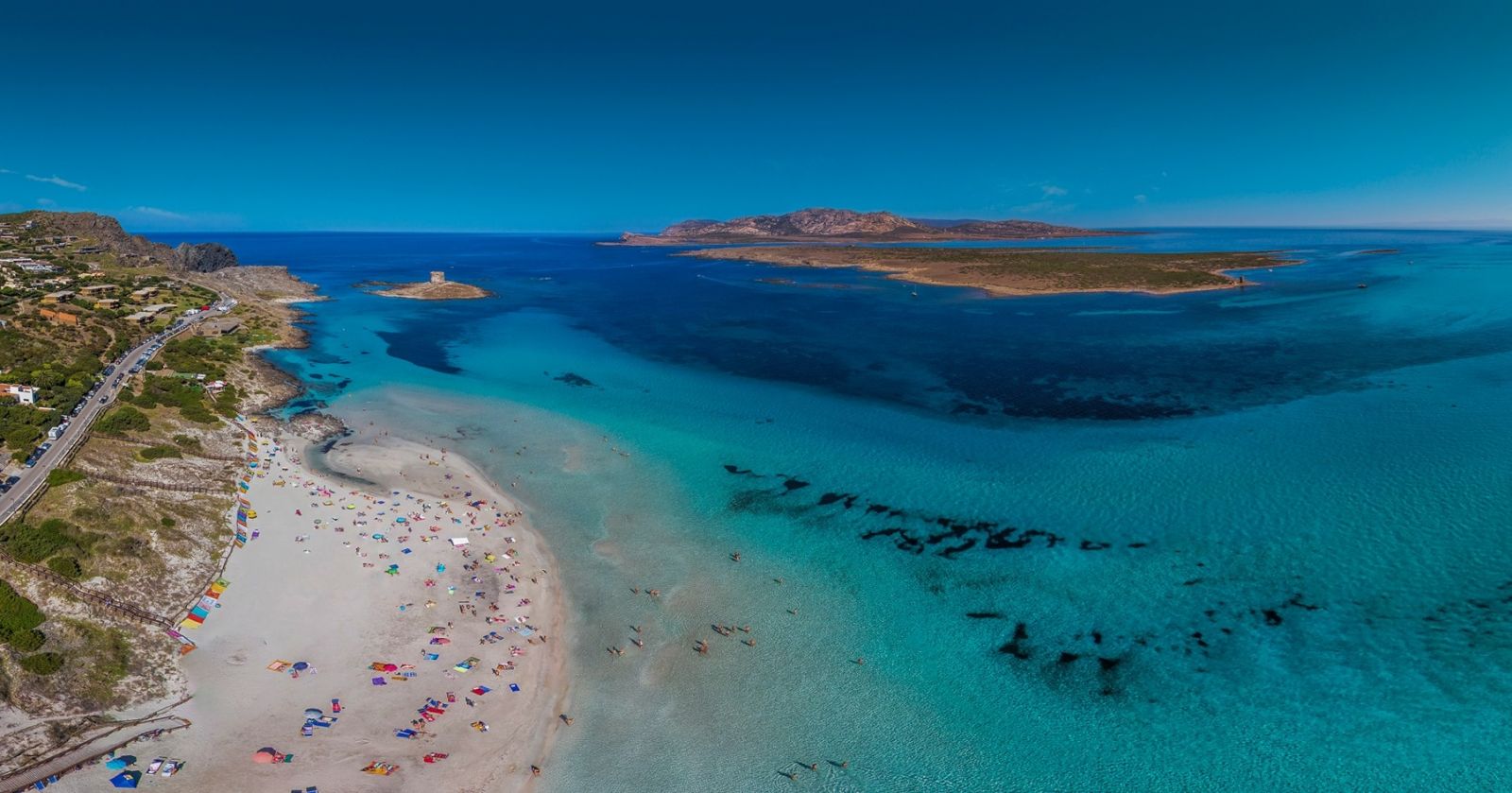
Sassari, the city
Like most of Italian cities, Sassari's sights are related to the city's history. The many fortresses are a silent witness to the various attacks on the city by foreign peoples. But the events are also a long tradition that continues to this day.
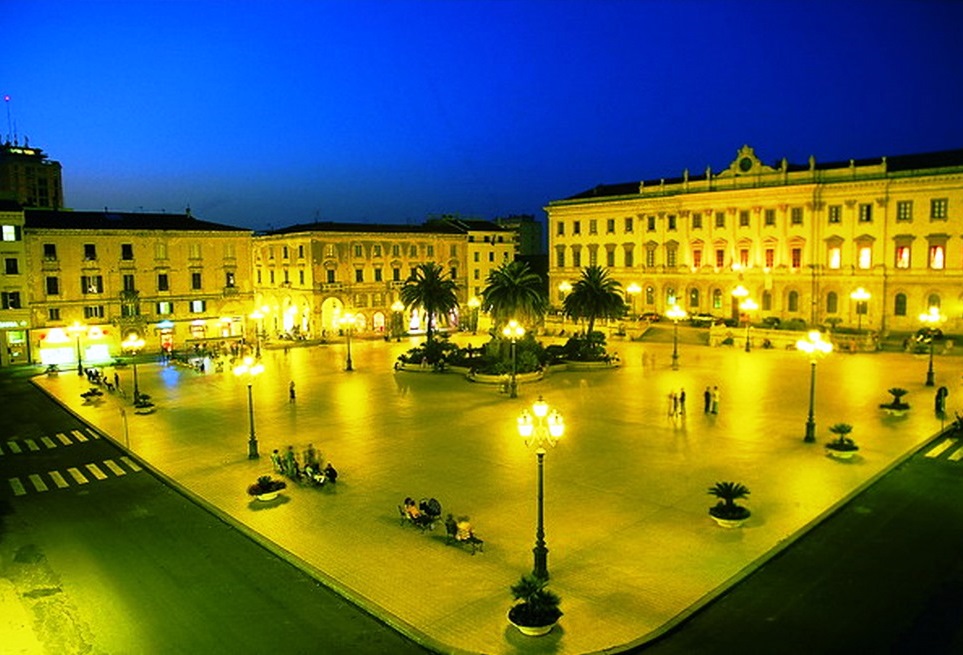
Church of Funtana Gutierre, Sassari : a church dug into a limestone wall. In the first phase, the church consisted of two apses (circular next to each other, with an altar and separated from each other by a pillar in the middle. In a next phase, a third apse in the form of a niche was added.
Church of San Pietro di Silki, Sassari: this church is one of the oldest Catholic sites in Sassari. The church is attached to the Franciscan monastery and is located at southwest of the historic centre.
Cathedral of San Nicola, Sassari: The Cathedral of St. Nicholas is Sassari's main church. It is located in the historic centre on the Piazza del Duomo and dates from the twelfth century.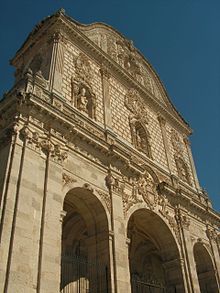
Palazzo Ducale, Sassari: The Doge's Palace dates from the second half of the eighteenth century. Today it is the seat of the municipal administration.
Walls of Sassari: The city walls were built in the thirteenth century and were guarded by 36 towers of which only six are left. They are visible all around the old town and in particular in Corso Vico, Corso Trinita and Via Torre Tonda.
Food and wine
Mineshtra 'en fasgioru: a soup made from beans, potatoes, bacon, wild fennel and sun-dried tomatoes.
Cordula: lamb wrapped in intestines and cooked with peas, onions, and tomato sauce.
Ziminu: sweetbread cooked on the grill and sometimes marinated.
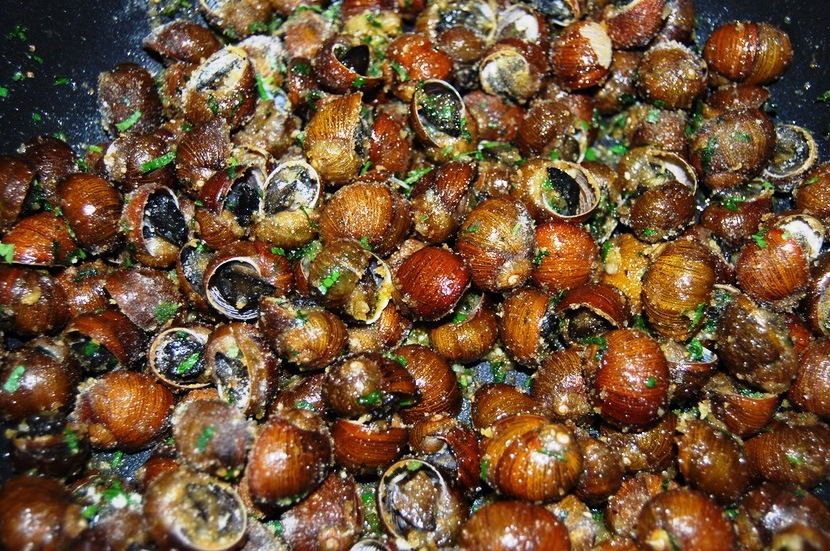 Snails: the real speciality of Sassari’s cuisine, there are different recipes, like small snails cooked with potatoes or with spicy sauce or fried in olive oil and seasoned with garlic parsley and covered in breadcrumbs.
Snails: the real speciality of Sassari’s cuisine, there are different recipes, like small snails cooked with potatoes or with spicy sauce or fried in olive oil and seasoned with garlic parsley and covered in breadcrumbs.
Events in the province of Sassari
Faradda li Candelieri, Sassari: On August 14th the city is crossed by the Faradda di li Candareri, a procession that ends with a religious ceremony. In this way, the inhabitants honour the Virgin Mary, who saved the city from the plague in the sixteenth century. During the procession, they carry elegant candlesticks on their shoulders. In the various squares there is music and singing, but this is often drowned out by the drums of the procession.
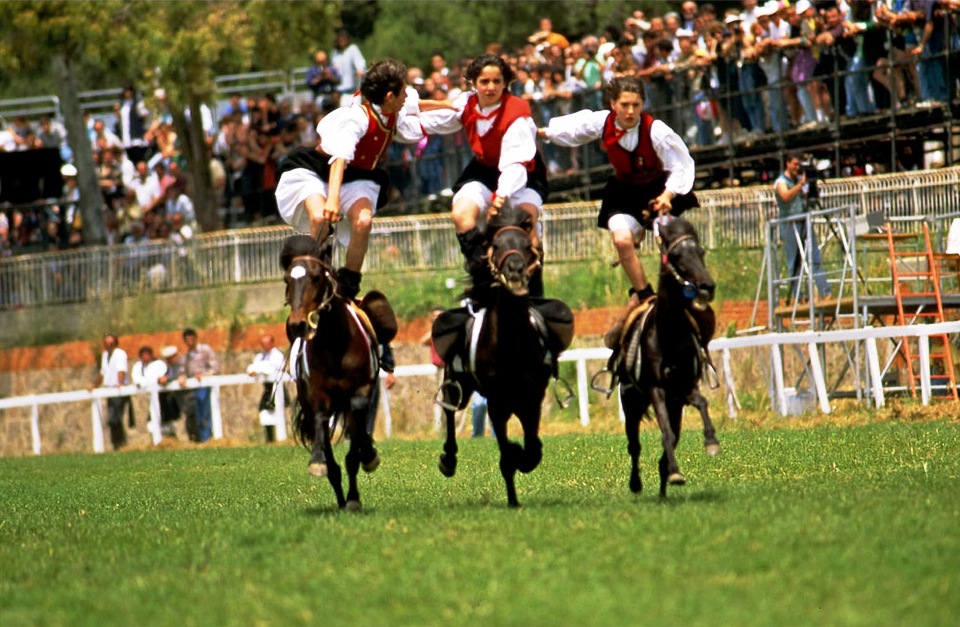 Cavalcata Sarda, Sassari: Every year on the Sunday of Ascension, the Cavalcata Sarda takes place in the city of Sassari. This is a parade of folk groups from different parts of Sardinia, walking or on horseback in traditional costume through the streets.
Cavalcata Sarda, Sassari: Every year on the Sunday of Ascension, the Cavalcata Sarda takes place in the city of Sassari. This is a parade of folk groups from different parts of Sardinia, walking or on horseback in traditional costume through the streets.
Festa del Voto, Sassari: The Festa del Voto is held on the last Sunday of May, as a reminder of Archbishop Arcangelo Mazzotti's pledge to Our Lady of Grace during World War II after a bomb fell on the city’s train station. The archbishop promised that a procession would be held every year from the cathedral to the Chiesa di S. Pietro. After that promise, the city has not been bombed anymore.
Festa di San Simplicio, Olbia: The festival of the patron saint of Olbia and Gallura, San Simplicio, is celebrated on May 15th. There are various activities, such as folk concerts and large fireworks. In addition, local specialities like the mussels can be tasted.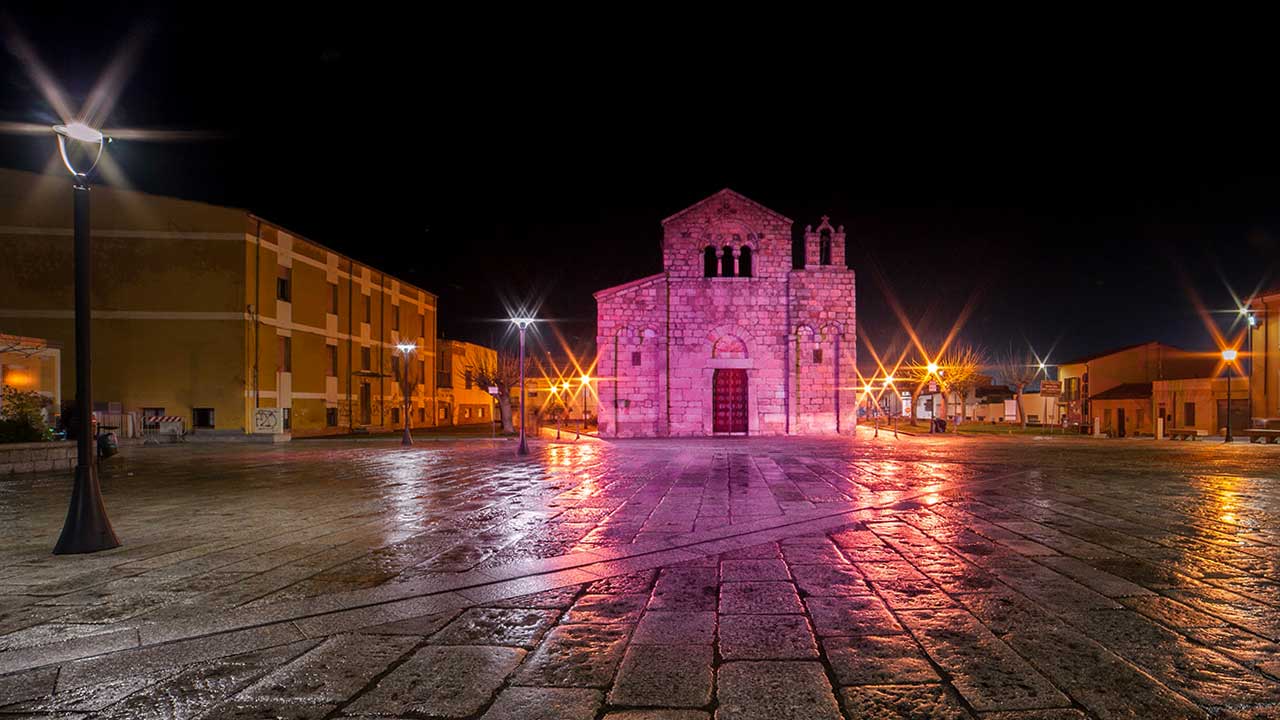
Faber Festival, Tempio Pausania: A festival that takes place at the end of July, dedicated to poet and singer-songwriter Fabrizio De André, who lived in Tempio Pausania for a long time. The festival consists of short films, music, and art in the centre of the city. In addition, a literary prize is awarded every year.
Hiking in Sassari and North Sardinia
There are a lot of hiking routes to explore the province of Sassari and enjoy an adventure in the northen part of Sardinia:
Goceano region - Sassari
Goceano is a beautiful walking area. It is mountainous and lies between Monte Acuto and the mountains of Barbagia and Marghine. The elements that characterize the area are the relief of Monte Rasu and the Tirso River with its many tributaries. The river feeds the wooded area. Because the height differences here are sometimes relatively small, the area is also suitable for less experienced hikers.
Route
A beautiful route is that from Vette del Goceano towards Valle del Tirso. This one is about 20 kilometers long and therefore good for a whole day of walking. The route starts at the village of Bultei, continues along an old road and finally ends at the forests of Fiorentini. Along the way you will pass the walls of a Byzantine fortress, the Church of St. George and the archaeological area of Sas Prisones.
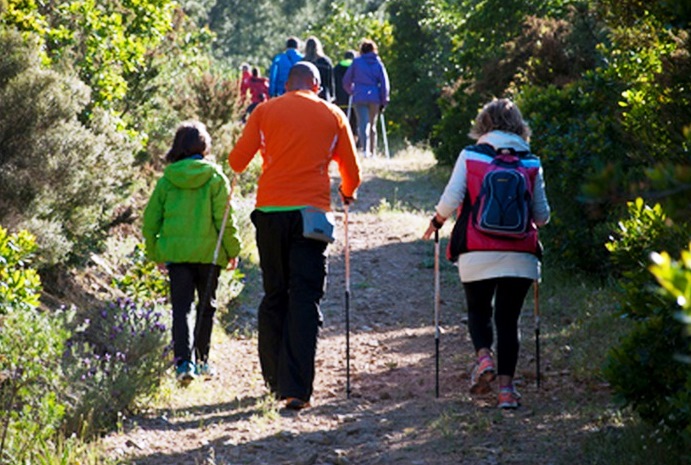 Gallura region – Sassari
Gallura region – Sassari
The Gallura region is interesting for both novice hikers and more experienced hikers. From the mountains the view over the island is beautiful and along the way you can take an occasional break in one of the picturesque villages. There are several routes, for hiking, trekking but also mountain biking.
Route
A relatively simple route runs through the Gallura from Santa Teresa to Stazzo Lu Pinnenti. In about three and a half hours you will cover a total of twelve kilometers, with minimal height differences. Along the way you will pass two special sights: The Spanish Tower and the sanctuary of the Madonna del Buon Cammino. From the coastal road you walk further inland and then descend. A very varied route. View the map .
Biking in North Sardinia
The province of Sassari knows how to challenge both the novice and the more experienced cyclist. Those who want to start on an easy route, is better to opt for the flatter forest area. Those looking for more of a challenge can go into the mountains or venture on a somewhat longer route through hilly areas. Due to the heat, it is advisable to book a cycling holiday in the spring or autumn.
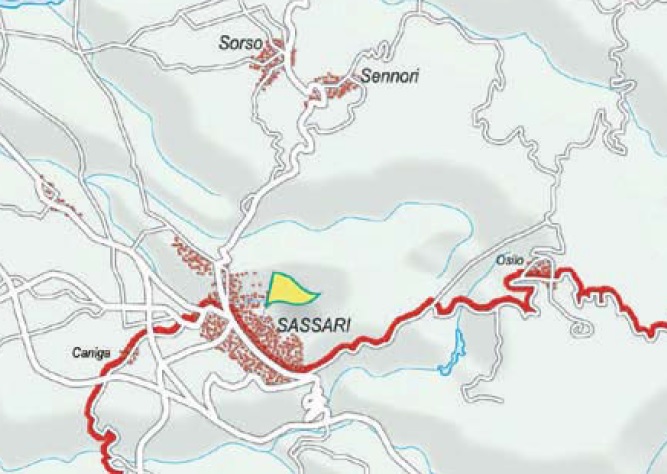 Route
Route
The old road from Sassari to Osilo is ideal for a bicycle ride without traffic. The road has many bends and some slight height differences. A route that is therefore also suitable for the less advanced cyclist. The route can be done in an hour with a racing bike.
After six kilometers (about halfway), Lake Bunnari is on your right, which is worth a visit. Because there is little traffic on the route, it is also easy to do with children. In that case it is advisable to take rest breaks given the length of the route.





